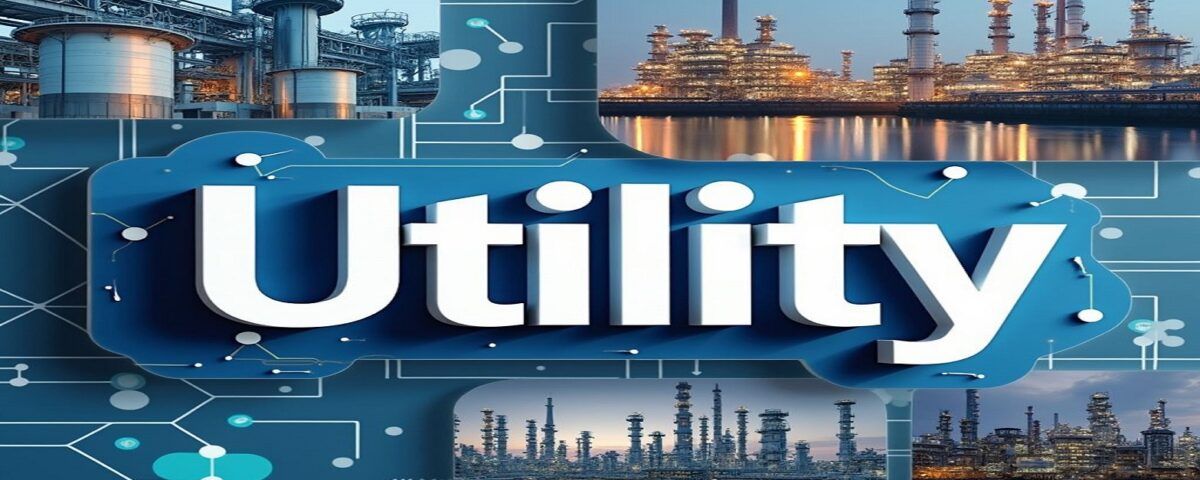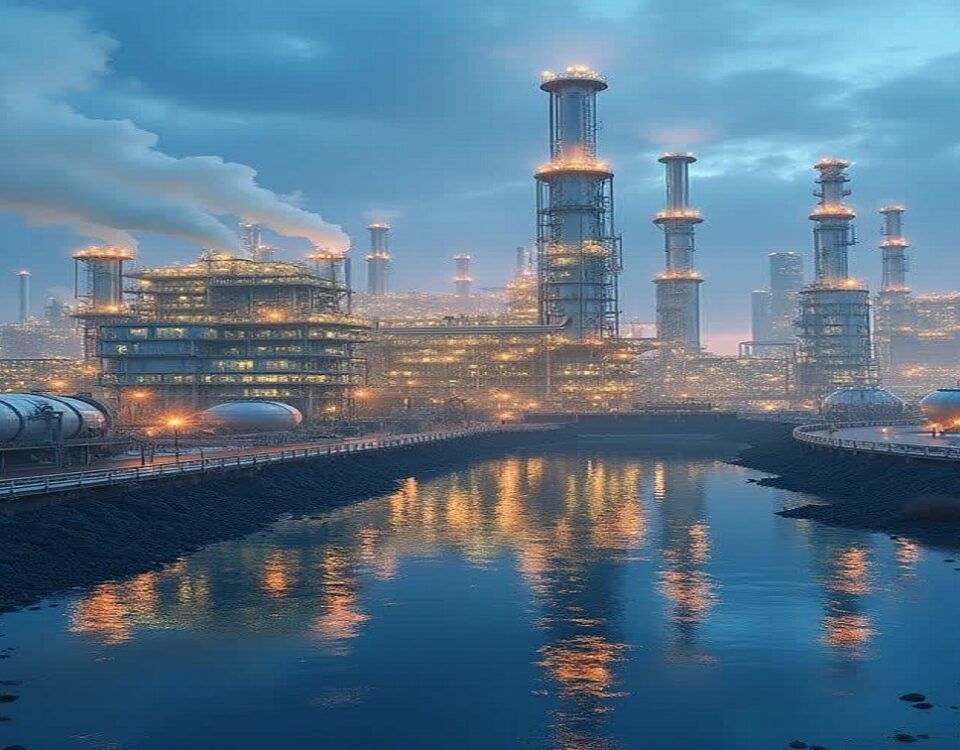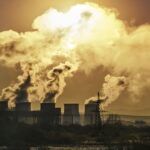
Carbon Dioxide (CO₂) Separation Using a New Method
آذر ۳, ۱۴۰۳
Application of Artificial Intelligence in Process Engineering
آذر ۶, ۱۴۰۳Introduction
In today’s world, with rapid technological developments and the increasing needs of societies, the design and optimization of facilities and utility units has become an undeniable necessity. Facilities units act as the backbone of urban and industrial infrastructure. And they play a vital role in providing basic services such as water, electricity, gas and sewage management. These units have a direct impact on sustainable development and environmental protection. Also, in the petrochemical industry, to maintain and optimize the performance of the units, Utility is important, which includes the supply of energy, water, steam, gas and other resources.
Facilities Units
Facilities units are groups that operate in order to provide various facilities and services in an organization, project or complex. These units can include infrastructure facilities such as water, electricity, gas, heating and cooling systems, sewage and other public services. Also, Facilities units may manage and maintain these facilities to ensure their optimal performance and safety.
In other words, it can be said that the facilities of any complex are the heart of that complex. and is responsible for transferring critical elements for different parts of the project. The most important reason why industrial facilities within factories have grown so much is the optimization factor.
Industrial Facilities
Industrial facilities include electrical and mechanical equipment that plays an essential role in the performance and safety of buildings and industrial units. In the design of industrial plant facilities. Factors such as the climatic conditions of the place of implementation. The architectural features of the building and its construction should be considered. Expert engineers help to maintain security and efficiency by correctly implementing all types of facilities.
The Process of Implementing Industrial Facilities
Preparation and design of diagram, industrial unit facilities
Performing detailed calculations related to how to choose mechanical systems such as water supply system and the type of industrial valves, sewage, refrigeration. heating, cooling and air conditioning facilities.
Investigating practical power of the complex for the outputs of mechanical facilities and the location of ducts and risers
Selection and provision of mechanical equipment for the facility unit based on standard quality
Design of Industrial Facilities
To optimize energy consumption, time and quality of work in today’s industrial society, the design of industrial facilities has been designed in two parts: mechanical facilities and electrical facilities.
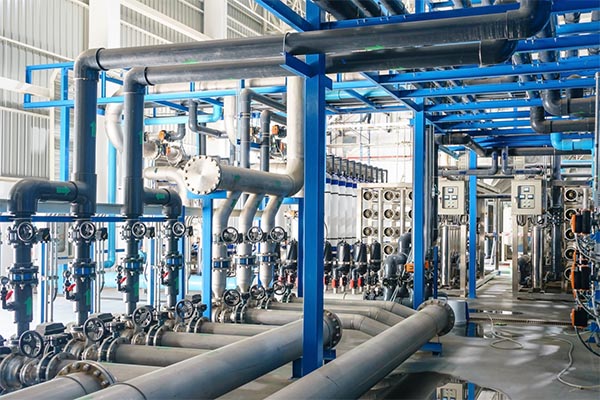
Mechanical Facilities
The main axis of mechanical facilities is related to the design of facilities and the way of cooling and heating of buildings and industrial plants. In addition to this, there is also the topic of transferring fluids from one point to another. which requires the use of industrial equipment and valves. The biggest cost in factories or even larger projects such as oil and petrochemicals is related to the procurement and production of its industrial equipment and facilities. Finally, all companies seek to increase work efficiency and optimize production processes by purchasing oil, gas and petrochemical equipment. Today’s technology, such as fully automatic industrial valves, has greatly helped to optimize energy consumption.
The mechanical facilities of a factory or industrial complex are divided into 4 general parts, and the role of industrial valves in all of them is more important than other mechanical equipment. These 4 parts include the following:
First unit is related to gas supply and transmission equipment.
Second unit is related to the preparation and collection as well as the separation of industrial and semi-industrial wastewater.
Third unit is the supply and transfer of water and other fluids, and industrial valves have the most and most sensitive applications in these parts.
Fourth unit is sanitary and industrial treatment plants, which have the task of refining wastes and separating them for reuse in the cycle.
In short, it can be said that mechanical facilities include the following:
Gas Supply
Health Care
Thermal
HVAC
Firefighting
1. Gas Supply Facilities:
The gas supply system is an important subset of mechanical installations and industrial installations. In this section, gas branches and pipeline routes must be implemented according to the rules and regulations of the gas company and the engineering system organization. The components of gas supply facilities include the following:
Regulator
Gas valve
Gas meter
Thermostat valve and…
For the piping system, the heat value, the farthest pipe path, determining the amount of gas consumption, etc. are very important things that must be considered. Also, the design and implementation of fire fighting installations should be in such a way that it follows the national standard laws of Iran Gas Company and has the necessary safety.
2. Health Care Facilities:
It is another component of mechanical installations. In fact, sanitary facilities are the same as water and sewage systems. There are two systems for transferring water in the water and sewage system of the building. that these two work together.
3. Thermal Facilities
The duty of thermal equipment is to keep the ambient temperature in an ideal and desirable state. Thermal installations are a set of heating equipment that have different types of malfunctions. Packages, fan coils, etc. are from this category. The general operation of thermal installations is that heat is transferred from a hotter object to a colder one. Various heating equipments use radiation, convection, and conduction methods to transfer heat to the air and heat the environment.
4. HVAC
HVAC facilities include systems and equipment related to ventilation, heating and air conditioning of the building and the environment. The purpose of these industrial facilities is to provide suitable and desirable temperature. In this system, the temperature and humidity of the interior of the building and the environment are controlled by heating, cooling, humidifying and drying the air.
5. Firefighting
The simplest fire extinguishers are fire extinguishers. Nowadays, everyone is familiar with the fire extinguishing system. which is one of the practical and important technologies of the intelligent control system. A fire extinguishing system consists of various components such as automatic water fountains, foaming system, portable firefighting equipment, etc.
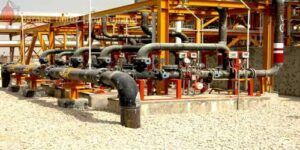
Petrochemical and Oil Refinery Fire Extinguishing Equipment and System
Safety equipment used in refineries and petrochemicals are very diverse and include extensive details. For this reason, it is not possible to cover all these equipments in this article. But they can be divided into several general categories. Generally, refinery and petrochemical safety equipment is divided into five main groups:
– Fire extinguishing
– Safety in pressure tanks
– Technical safety
– Fire prevention
Each of these categories includes a wide range of safety equipment that is necessary for the start-up and operation of petrochemical sites and refineries.
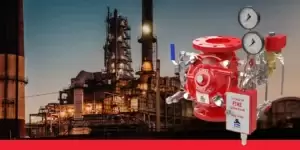
Electrical Facilities
Supply, distribution and transmission of electricity in different units is the responsibility of the electrical installations of that complex. Correct installation of these facilities requires knowledge, skills and proper equipment. If the expert does not have enough experience and equipment, the correct and safe implementation of the electric current will not take place. One of the critical aspects of setting up an electrical system is correct wiring.
In electrical facilities, the following are important:
Creating road diagrams and designing general units and sub-categories of electronic facilities
Documenting the specifications of the tools and processes required by the facility
Designing the work execution process and providing technical documents related to the construction of units
Active presence at the project site and monitoring the implementation of plans according to the sensitivity of electrical facilities
Registration and archiving of design and engineering information in all the different stages of the implementation of the facility project
Facilities Units Engineering
The engineering of petrochemical facilities and refineries includes several key aspects, each of which plays an important role in the production and operation of these facilities:
1. Process Design: This stage includes the analysis and design of chemical processes that occur in petrochemicals and refineries. Engineers must determine the type of chemical reactions, temperature, pressure, and operating conditions. to have the best productivity and product quality.
2. Selection of Equipment: Selection and design of suitable equipment such as reactors, heat exchangers, pumps and separation systems are among the duties of engineers. This equipment must be compatible with the process conditions. and have the ability to withstand the desired pressure and temperatures.
3. Piping and Control Systems: designing piping systems for the transfer of raw materials and finished products. And also control systems to monitor processes and optimize the performance of facilities are other important aspects of this engineering.
4. Project Management and Planning: Engineers in this field must have the ability to manage projects. including scheduling, budgeting and monitoring the various phases of the project to ensure that everything goes according to plan.
5. Safety and Environment: Compliance with safety and environmental standards is one of the vital aspects in the engineering of utility units. Engineers must ensure that facilities are designed and operated properly. to minimize potential risks and reduce negative effects on the environment.
6. Maintenance and Repairs: After setting up the facilities, engineers are responsible for maintenance and repairs. This includes planning preventive maintenance, identifying problems and improving the performance of systems.
Reasons for The Importance of Design, Industrial Facilities of The Factory
The types of facilities required by an industrial plant are important for various reasons, including:
Reducing maintenance costs: favorable industrial facilities have reduced the need for many repairs. And as a result, the costs of maintaining factory facilities and their repairs are significantly reduced.
Energy efficiency: Optimum industrial facilities reduce energy consumption and preserve the environment. which helps to maintain the quality of life and economic management in long periods.
Utility
Utility in the petrochemical and refinery industries means optimizing the consumption of energy, water, steam, and other resources needed for production processes. This concept helps in systematic and integrated management of resources to prevent waste of energy and costs and at the same time helps to increase efficiency and productivity.
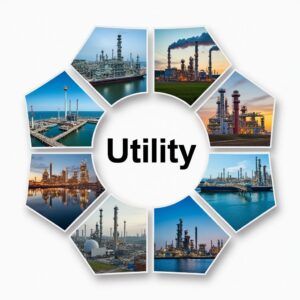
Importance of Utility
Utility refers to services and facilities that help industry meet their basic needs. The importance of utility in the industry depends on several factors:
1. Supply of energy and resources: Utilities include the provision of electricity, water, gas, and other energy resources that are necessary for the operation of industries and daily life.
2. Economic Infrastructure: Utilities serve as key infrastructure for economic growth. And they allow companies to operate more efficiently and at lower costs.
3. Environmental protection: By using sustainable and renewable utilities, industries can reduce their negative impact on the environment and help preserve natural resources.
5. Technology Development: Utilities help develop and innovate new technologies, especially in the areas of renewable energy and resource management.
Refinery Utility Units
Utility units of the refinery, which mainly include the following systems:
Electricity and steam production, which generally consists of one or more GTG, HRSG and Auxiliary Boiler. Water and wastewater treatment systems include Desalination Unit, Raw Water, Cooling Water, Potable Water, Demineralized Water, etc.
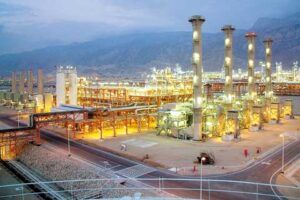
Utility units in refineries refer to a set of facilities and systems. which are designed to provide energy needs and other ancillary services in oil refining processes and other products. These units generally include the following:
Utility units in refineries are essential for ensuring the efficient operation of various processes involved in refining crude oil into valuable products. These units typically include:
1. Power Generation Units:
These provide the necessary electricity for refinery operations. They can include gas turbines, steam turbines, and diesel generators.
2. Water Treatment Units:
3. Steam Generation Units:
4. Air Compression Units:
5. Cooling Towers:
6. Fuel Gas Systems:
7. Waste Management Units:
Utility Units in Petrochemicals
Utility units in petrochemical plants are vital for supporting the various processes involved in converting raw materials into petrochemical products. These units ensure the availability of essential services required for efficient operations. Key utility units in petrochemical facilities include:
1. Power Generation Units:
2. Steam Generation Units:
3. Cooling Water Systems:
4. Water Treatment Units:
5. Air Compression Systems:
6. Fuel Gas Systems:
7. Waste Management Units:
8. Instrument Air Systems:
The Importance of Utilities in Petrochemicals
The importance of utility systems in petrochemical plants cannot be overstated, as they play a critical role in the overall efficiency, safety, and sustainability of operations. Here are several key reasons highlighting their significance:
1. Operational Efficiency:
2. Process Support:
3. Safety and Reliability:
4. Environmental Compliance:
5. Cost Management:
6. Flexibility and Adaptability:
7. Integration with Advanced Technologies:
Anil Pars Company
Conclusion
In general, it can be said that facilities and utility units are of great importance in the petrochemical and refinery industry. Because as critical infrastructures, they help provide energy, water, steam, compressed air and other ancillary services needed for production operations. These units not only play a key role in optimizing production processes, but also help to increase productivity and reduce costs. The existence of effective utility units and facilities leads to improvement of safety, reduction of environmental pollution and improvement of the quality of final products. Also, these units help to preserve resources and reduce negative effects on the environment by complying with environmental and safety standards. Finally, investing in the improvement and development of these units can lead to increasing the stability and competitiveness of petrochemical and refinery industries and play an important role in achieving economic and environmental goals.
